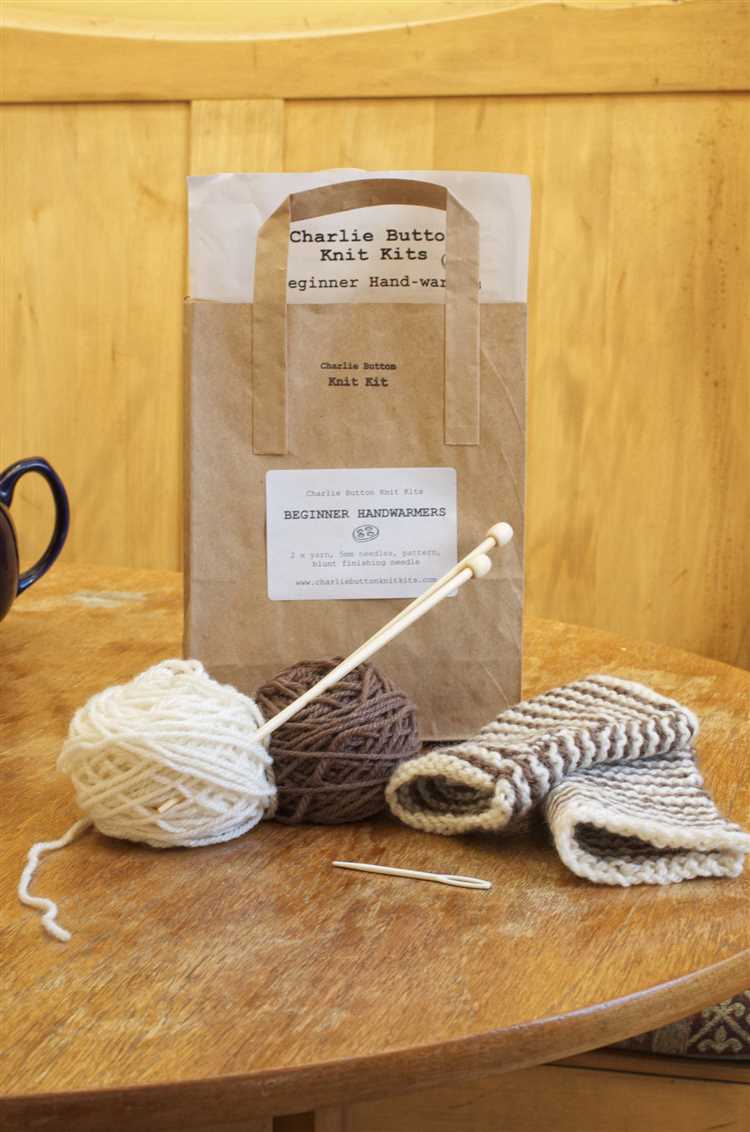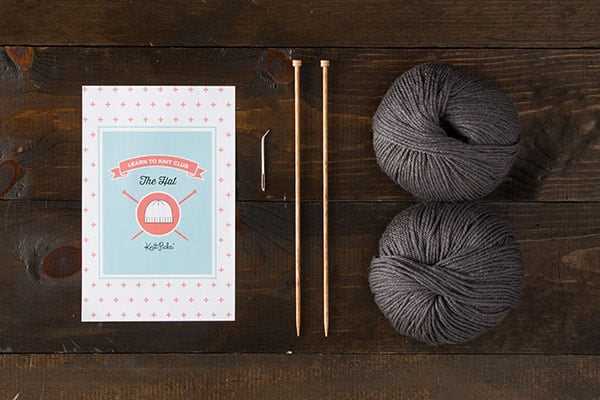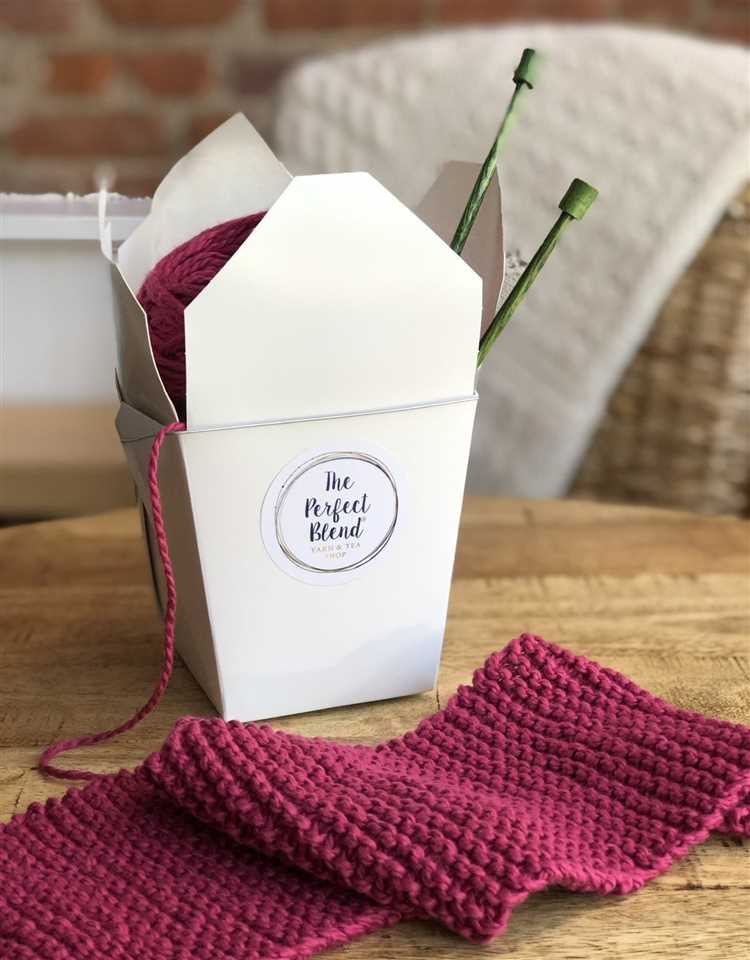Are you interested in learning how to knit but don’t know where to start? Look no further than our comprehensive “Learn How to Knit Kit for Beginners.” This kit is designed specifically for those who have never picked up knitting needles before and provides step-by-step instructions to help you master this timeless craft.
Knitting is a versatile and enjoyable hobby that allows you to create beautiful and functional items with just a few simple tools. With our kit, you’ll receive everything you need to get started, including a set of knitting needles, a variety of yarns in different colors and textures, and an easy-to-follow instruction booklet.
Our step-by-step knitting guide will take you through the basics of knitting, starting with how to hold the needles and create a slipknot. From there, you’ll learn various stitches such as the knit stitch, purl stitch, and basic ribbing. As you progress, the guide will introduce more advanced techniques like increasing, decreasing, and knitting in the round.
“Learning to knit is not only a fun and relaxing pastime, but it also allows you to create personalized gifts for your loved ones or beautiful accessories for yourself. Our Learn How to Knit Kit for Beginners is the perfect introduction to this fulfilling craft.”
Whether you’re looking to knit cozy scarves, hats, or even blankets, our kit will provide you with the skills, materials, and confidence you need to create your own handmade treasures. So why wait? Start your knitting journey today with our Learn How to Knit Kit for Beginners!
What is a Learn How to Knit Kit?
A Learn How to Knit Kit is a beginner-friendly package that includes all the essential tools and materials needed for someone to start learning how to knit. These kits are designed to provide a comprehensive introduction to knitting and make it easy for beginners to get started on their knitting journey.
The contents of a Learn How to Knit Kit may vary slightly depending on the brand or retailer, but typically, it includes the following:
- Knitting Needles: The kit will include a pair of knitting needles, which are essential for knitting. Most kits include a set of straight needles or circular needles. The size of the needles can vary, but kits for beginners usually include medium-sized needles that are suitable for a wide range of knitting projects.
- Yarn: The kit will also include a skein or ball of yarn, which is the material used for knitting. The type and color of yarn can vary, but kits for beginners often include a soft and easy-to-work-with yarn in a neutral color.
- Instructions: A Learn How to Knit Kit will provide step-by-step instructions or a knitting guidebook that explains the basics of knitting. These instructions usually cover essential techniques, such as casting on, knitting, purling, and binding off. The instructions may also include simple knitting patterns for beginners to practice their newly acquired skills.
- Accessories: Some kits may also include additional accessories, such as stitch markers, a tapestry needle for sewing in loose ends, and a measuring tape for checking gauge.
With a Learn How to Knit Kit, beginners can easily get started on their knitting journey without the hassle of searching for separate tools and materials. The kit provides everything they need to begin learning and practicing the basics of knitting.
These kits are perfect for individuals who are interested in learning a new craft and want a convenient way to start. They also make great gifts for anyone who wants to explore the world of knitting. Whether you’re a total beginner or looking to refresh your knitting skills, a Learn How to Knit Kit is a great way to get started.
Why is it important for beginners?
Learning how to knit can be a fulfilling and rewarding hobby. It allows individuals to create beautiful and functional items, while also providing relaxation and a sense of accomplishment. For beginners, having a learn how to knit kit can be incredibly important for several reasons:
- Step-by-step guidance: A knitting kit for beginners provides a structured and organized approach to learning. It typically includes a detailed knitting guide that breaks down the basics of knitting into manageable steps. This step-by-step guidance is invaluable for beginners who may feel overwhelmed or unsure of where to start.
- All-in-one package: Beginners often find it difficult to gather all the necessary knitting supplies on their own. A knitting kit for beginners usually includes all the essential tools needed to get started, such as knitting needles, yarn, stitch markers, and a tapestry needle. This eliminates the guesswork and saves beginners the time and effort of searching for individual supplies.
- Quality materials: The materials provided in a knitting kit for beginners are usually of good quality. This ensures that beginners can practice and learn with materials that are reliable and suitable for their needs. Using quality materials can also result in better finished products and a more enjoyable knitting experience.
- Clear instructions: Beginner knitting kits often come with clear and easy-to-follow instructions. These instructions usually include illustrations or diagrams to visually demonstrate various knitting techniques. Clear instructions help beginners understand the knitting process and build their skills effectively.
- Support and resources: Many knitting kits for beginners also provide additional support and resources. This can include access to online tutorials, videos, or a community of fellow beginners. Having access to additional resources can enhance the learning experience and provide ongoing support for beginners as they progress in their knitting journey.
In conclusion, a learn how to knit kit for beginners is important because it provides step-by-step guidance, includes all necessary supplies, ensures quality materials, offers clear instructions, and provides additional support and resources. By having a knitting kit specifically designed for beginners, individuals can start their knitting journey with confidence and enjoy the benefits of this creative and relaxing hobby.
Benefits of using a Learn How to Knit Kit
Learning how to knit can be a fun and rewarding hobby, but getting started can be overwhelming for beginners. That’s where a Learn How to Knit Kit can come in handy. Here are some of the benefits of using a Learn How to Knit Kit:
- All-in-one solution: A Learn How to Knit Kit typically includes all the essential tools and materials you need to get started with knitting. This can save you time and effort in trying to find and purchase each item individually.
- Step-by-step instructions: Most Learn How to Knit Kits come with detailed step-by-step instructions that guide you through the knitting process. These instructions are often accompanied by clear illustrations or diagrams, making it easier for beginners to follow along.
- Variety of projects: Learn How to Knit Kits often offer a variety of projects to choose from, ranging from simple scarves to more complex sweaters or hats. This allows beginners to start with easier projects and gradually build their skills and confidence.
- Basic knitting techniques: A Learn How to Knit Kit usually covers the basic knitting techniques, such as casting on, knitting, purling, and binding off. By learning these fundamental techniques, beginners can then move on to more advanced knitting patterns and stitches.
- Convenience: Having all the necessary tools and materials in one kit makes it convenient for beginners to start knitting right away. There’s no need to search for individual needles or yarns, as everything is provided in the kit.
- Great gift idea: A Learn How to Knit Kit can make a great gift for someone interested in learning how to knit. It offers a complete package that allows the recipient to dive into the world of knitting with ease.
Overall, a Learn How to Knit Kit provides beginners with a convenient and comprehensive introduction to knitting. It takes away the stress of gathering supplies and provides step-by-step guidance, allowing beginners to focus on the joy of learning a new skill.
Step-by-Step Knitting Guide
Knitting is a popular craft that allows you to create beautiful and functional items using just two needles and yarn. If you are a beginner, this step-by-step knitting guide will help you get started and learn the basics of knitting.
1. Gather the Necessary Materials
Before you begin knitting, make sure you have all the necessary materials. You will need knitting needles, yarn, scissors, and a tapestry needle.
2. Choose Your Yarn
There are various types of yarn available, each with different textures, colors, and thickness. For beginners, it is recommended to start with a medium weight yarn as they are easier to manipulate.
3. Learn the Basic Knitting Stitches
There are two main knitting stitches: the knit stitch and the purl stitch. Start by learning the knit stitch, as it is the foundation of most knitting patterns. Once you are comfortable with the knit stitch, you can move on to the purl stitch.
4. Practice Casting On
Casting on is the first step in starting any knitting project. It creates the foundation row of stitches on your needle. There are various methods of casting on, but the long-tail cast-on is commonly used by beginners.
5. Start Your First Project
Once you are familiar with the basic knitting stitches and have practiced casting on, you are ready to start your first project. Choose a simple pattern such as a scarf or dishcloth to begin with. Follow the instructions and knit at your own pace.
6. Learn to Fix Mistakes
Mistakes happen, even to experienced knitters. Learning how to fix common mistakes like dropped stitches and unraveling rows is an essential skill. There are many online tutorials and resources available that can guide you through the process of fixing mistakes.
7. Blocking and Finishing
Once you have completed your knitting project, it is important to block and finish it. Blocking involves shaping and stretching your knitted piece to the desired measurements. Follow the instructions for your specific project to achieve the best results.
8. Expand Your Skills
After completing your first project, continue to challenge yourself and expand your knitting skills. Try learning new stitches, experimenting with different patterns, and tackling more complex projects. The more you practice, the more confident you will become in your knitting abilities.
Conclusion
Knitting is a rewarding and relaxing hobby that allows you to create beautiful and personalized items. With this step-by-step knitting guide, you can start your knitting journey and gradually develop your skills. Remember to be patient, practice regularly, and have fun with your knitting projects!
Basic knitting techniques
Knitting is a popular craft that involves creating fabric by interlacing yarn or thread using knitting needles. If you are new to knitting, it’s important to start with some basic techniques to build your skills and create beautiful projects. Here are some foundational knitting techniques to get you started:
1. Casting on
Casting on is the first step in starting a knitting project. It involves creating the foundation row of stitches on one of the knitting needles. There are several methods for casting on, such as the long-tail cast on, the knit cast on, and the cable cast on. Each method creates a different type of edge and has its own advantages.
2. Knit stitch
The knit stitch is the most basic stitch in knitting. It creates a smooth, V-shaped fabric and is commonly used in many knitting patterns. To knit a stitch, insert the right needle into the stitch on the left needle, from front to back. Then, wrap the yarn around the right needle counterclockwise and pull it through the stitch, sliding the old stitch off the left needle. Repeat this process for each stitch.
3. Purl stitch
The purl stitch is the reverse of the knit stitch and creates a bumpy texture on the fabric. To purl a stitch, insert the right needle into the stitch on the left needle, from back to front. Then, wrap the yarn around the right needle clockwise and pull it through the stitch, sliding the old stitch off the left needle. Repeat this process for each stitch.
4. Knit and purl rows
By alternating between knitting and purling stitches in each row, you can create different stitch patterns and textures. This technique is commonly used in ribbing, seed stitch, and various other stitch patterns.
5. Binding off
Binding off is the final step in completing a knitting project. It involves securing the stitches and creating a neat edge. To bind off, knit the first two stitches, then insert the left needle into the first stitch on the right needle. Lift it over the second stitch and off the right needle, leaving one stitch on the right needle. Continue knitting one stitch and passing the previous stitch over until there is only one stitch left. Cut the yarn, leaving a tail, and pull it through the remaining stitch to secure it.
6. Increasing and decreasing stitches
By increasing or decreasing stitches, you can shape your knitting project. Common methods for increasing stitches include yarn overs, knitting into the front and back of a stitch, and making a knit or purl increase. Decreasing stitches can be done through methods like knitting or purling two stitches together or slipping, knitting, and passing the slipped stitch over.
These basic knitting techniques provide a strong foundation for exploring more advanced stitches and patterns. Remember to practice regularly and be patient with yourself as you learn. Happy knitting!
Recommended tools and materials
To get started with knitting, you will need a few basic tools and materials. Here is a list of recommended items for beginners:
- Knitting Needles: Choose a pair of knitting needles appropriate for your project. The size of the needles will depend on the yarn weight you are using, so make sure to check the label for guidance.
- Yarn: Select a yarn that is suitable for beginners. Worsted weight yarn is a good choice as it is easy to work with and comes in a wide range of colors. You can also experiment with different types of yarn, such as acrylic or cotton, to see which you prefer.
- Tape Measure: A tape measure is essential for measuring your work and ensuring that it matches the pattern’s specifications.
- Scissors: A pair of sharp scissors will come in handy for cutting the yarn.
- Tapestry Needle: You will need a tapestry needle for weaving in loose ends and sewing seams.
- Stitch Markers: Stitch markers are useful for keeping track of specific stitches or sections in your knitting.
While not essential, the following items may also come in handy:
- Row Counter: A row counter can be used to keep track of the number of rows you have knit.
- Knitting Gauge: A knitting gauge tool helps you measure the number of stitches and rows per inch, ensuring that your work matches the pattern’s gauge.
- Pattern Book or Online Resources: Beginners may find it helpful to have a pattern book or access to online resources that provide step-by-step instructions and knitting patterns.
Having these tools and materials on hand will set you up for success as you embark on your knitting journey. Remember to choose high-quality materials, as they will make your knitting experience more enjoyable and yield better results. Happy knitting!
Common mistakes to avoid
When learning how to knit, it’s natural to make mistakes. However, being aware of common mistakes can help you avoid frustration and make your knitting experience more enjoyable. Here are some mistakes to watch out for:
- Twisted stitches: One common mistake is unintentionally twisting your stitches, which can lead to a twisted garment. Make sure to insert your needle into the correct part of the stitch to avoid this mistake.
- Uneven tension: Maintaining a consistent tension is crucial for achieving even and professional-looking stitches. Avoid pulling the yarn too tight or leaving it too loose.
- Dropped stitches: Accidentally dropping stitches can be frustrating, but it’s important not to panic. Use a crochet hook or a knitting needle to pick up the dropped stitch and place it back on the needle.
- Forgetting to count: Counting your stitches and rows is essential for keeping track of your progress and ensuring consistency throughout your project. Don’t forget to pause and count regularly.
- Not checking gauge: Gauge refers to the number of stitches and rows per inch in a knitted fabric. Failing to check your gauge can result in a project that is too small or too large. Take the time to knit a gauge swatch before starting your project.
- Ignoring patterns and instructions: Reading and following patterns and instructions carefully is crucial to avoid errors. Make sure to understand each step before proceeding.
Avoiding these common mistakes can help you become a confident and skilled knitter. Remember, practice makes perfect, so don’t get discouraged if you make a mistake. Learn from each experience and keep knitting!
FAQ:
What is included in the Learn How to Knit Kit for Beginners?
The Learn How to Knit Kit for Beginners includes a set of knitting needles, a beginner-friendly knitting booklet, and a few skeins of yarn to get you started.
Do I need any prior knitting experience to use the Learn How to Knit Kit?
No, the Learn How to Knit Kit is designed specifically for beginners with no prior knitting experience. The knitting booklet included in the kit provides step-by-step instructions and illustrations to help you get started.
Where can I purchase the Learn How to Knit Kit for Beginners?
The Learn How to Knit Kit for Beginners is available for purchase on our website. Simply visit our online store and search for the kit to place your order.
Can I choose the color of the yarn included in the Learn How to Knit Kit?
The Learn How to Knit Kit for Beginners comes with a variety of yarn colors to choose from. When placing your order, you can specify your preferred color or choose a random assortment if you’re open to trying different colors.


